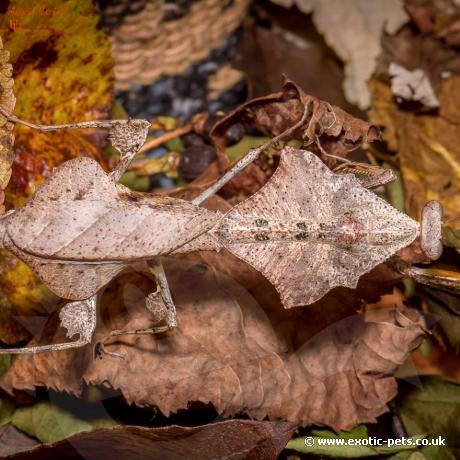

These mantis mimic crumpled fallen leaves, giving them a superb natural camouflage.

This spinney looking fellow is camouflaged to mimic decaying, crumpled leaves. The colours range from a mottled brown, pale orangey brown through to an almost black. Size depends on species and sex, but range from 75 - 85mm in size. Females are substantially larger and heavier then males.
If you disturb them, they will gently rock as if they have been caught in the breeze. And if they feel threatened, they will throw them selves to the ground, lying motionless on the floor.
Malaysia. All of these species can be found here as well as Borneo, Indonesia and Sumatra. Being hot countries, you should keep the temperature at about 25 - 30C with a humidity in the region of 70 - 80%. This is slightly warmer and more humid than other species of Mantids are normally kept.

An adult female Dead Leaf Praying Mantis - Deroplatys desiccata
Ish!!! These Mantids may look fragile, but are a relatively hardy species. Please be aware that if the humidity is not right, the Mantis can have problems shedding. They can have difficulty in discarding the old skin and become tangled and crippled in the old one (especially when young). To help prevent this from happening, spray the cage every few days with a fine mister.
The cage should have a reasonably sized floor area, covered in dead leaves. A thick branch or stem should be provided for him/her to hang off.
Dead Leaf Mantids can be kept together. I never thought these could be keep together apart from very young, but I have been proven wrong. If ample food and space is provided then they live very happily together. Even when they do become hungry they would prefer to hunt for live foods on the ground instead of attaching each other.
The Adults (both sexes) can live together too. It's best I think, to pair a male up with two females, incase there are any fights between the males.